Buan County is described as "the capital of Korean Baduk" and "Korean Baduk's root". The pioneer of Korean Baduk—Cho Namcheol 9P—was born and raised in Buan. Buan sponsored the Female Kiseong Cup Pro Baduk Tournament and is constructing "Cho Namcheol Museum". Its salt and local cuisines are famous on a national scale.
Furthermore, Buan’s tourist attractions including Jikso Falls, Jeokbyeokgang River, Byeonsan Beach and Naesosa Temple add to its charm and geographical beauty.

| Representative color(white) | The color white represents Buan's pureness and calmness. |
|---|---|
| Arc(Red) | The color red represents the beautiful sunset, tradition, cooperation, and hope of Buan, and also tourism, which is the center of Buan's future. |
| Blue | The color blue represents Buan's clean and clear oceans. |
| Green | Represents a nature-friendly image, and also represents Buan's bountiful mountains and fields. |
| Represents | Buan's vigorous movement toward a bright future. |

The strong life and graceful image of the maidenhair tree represents Buan's infinte potential and possibility for development.

The royal azalea easily adapts to new environments and is very fertile, representing the energetic spirit and prosperity of the county people.

The dove represents the peace and cooperation alive in the county, where the people are warm and friedly.

The silkworm symbolizes the growth engine of Buan-gun, providing various products including mulberry and silk.

Foundonly in Baekcheon Stream, Buan-gun, Iksookimia pumila symbolizes the pride and dignity the people have in clean nature.
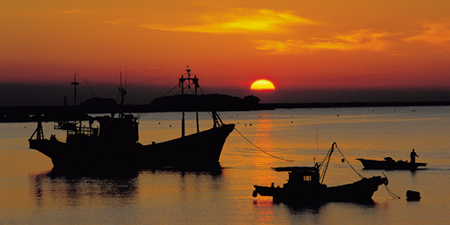
The beautiful landscape of West Sea starts from Julpo and passes by Gomso. The water reflects lantern lit fishing boats floating on the Gomso Bay, creating a beautiful nightscape. Fishermen, carrying rods on their shoulders, sing songs as they walk to the sea.
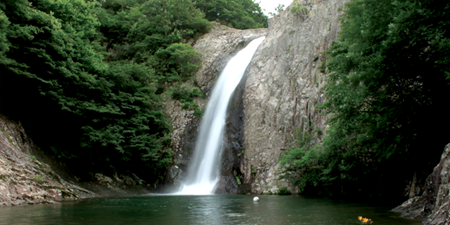
Located right at the center of the Naebyeon Mountain, Jigso Waterfall has long been one of the most beautiful places of the Byeonsan area. It is said that "you will neversee the beautiful sceneries of Byeonsan when you do not visit Jigso Waterfall and Junggye Valley".
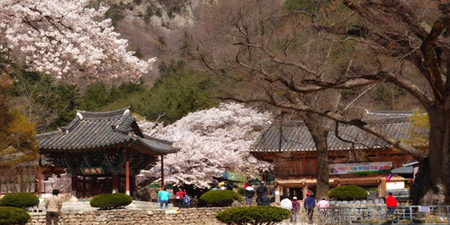
The thousand-year-old Naesosa Temple looks over the deep blue waters of Gomso Bay under the Gwaneumbong Peak.It is considered the third scenic View of Byeonsan. It has a dense forest inside of the temple and a mysterious bell sound resonates peacefully in the dark after sunset.
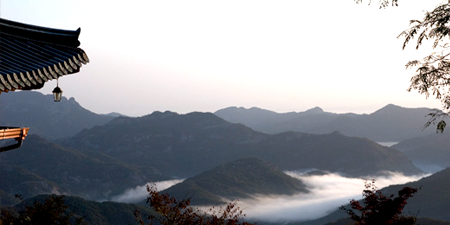
It’s beautiful to see the moon rising from Wolmyeong Rock on the cloud sea of Byeonsan. What is more beautiful is the rising sun and misty haze hanging on the peaks and the cloud seas dancing on the mountains.

The sunrise of Naksan and the sunset on the West Sea have long been considered the most beautiful sceneries. Looking from Nakjodae of Byeonsan, small islets of Gogunsando and Wido Islands are floating on the water. The blazing red fire ball dives into the deep water as if extinguishing all passion, creating a breathtaking scene.
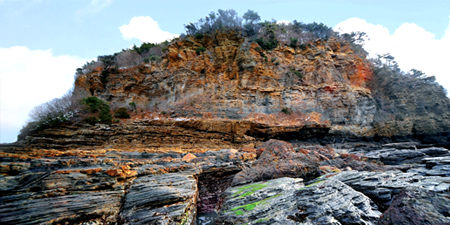
Ages of waves have cut and worn rocks, creating a beautiful marine cliff and cave. Chaeseokgang River provides alluring scenery with hidden mysteries and secrets of Mother Nature.
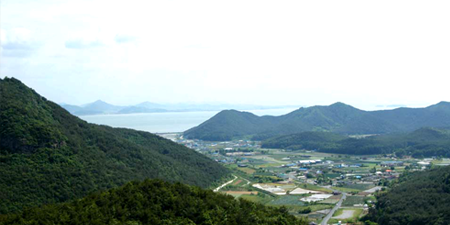
Jiseori, Byeonsan-myeon has long been known as Jijipo. Climbing from Jipo toward SsangseonbongPeak, the cool sea breeze stops your steps and the landscape layered with peaks arrests your attention.
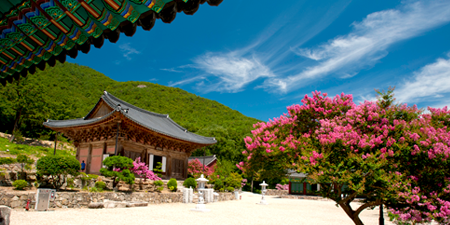
Gaeamsa Temple is located under the landmark of Byeonsan, Ulgeum Rock. As a thousand-year-old temple, it has a long history and brilliant culture. It was the basecamp of the Revival movement of the Baekje Dynasty. The courageous posture of Ulgeum Rock and the traces of Juryuseong Fortress are of high historical values.